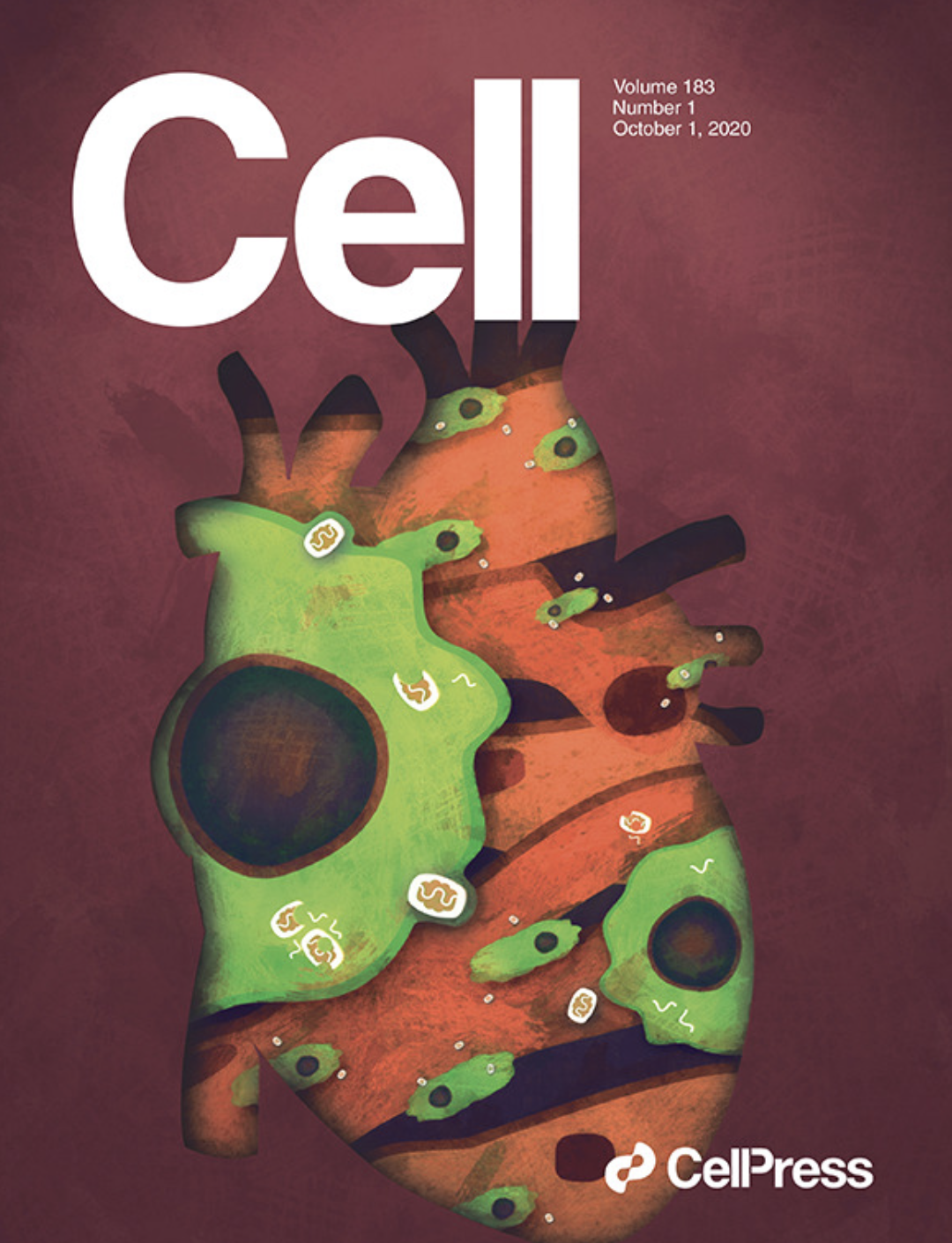2020 was an unusual year, but a fulfilling one at that. Bioss is proud of standing behind many research laboratories in support of their groundbreaking discoveries. Our products were cited in many notable journals in 2020. We are pleased to mention some highlights from one Nature and four Cell papers.


Authors here reported that inactivation of YBX1, a post-translationally modified target of JAK2, sensitizes cells that persist despite treatment with JAK inhibitors to apoptosis and results in RNA mis-splicing, enrichment for retained introns and disruption of the transcriptional control of extracellular signal-regulated kinase (ERK) signalling. YBX1 inactivation induces apoptosis in JAK2-dependent mouse and primary human cells, causing regression of the malignant clones in vivo, and inducing molecular remission. All these results suggested a cell-intrinsic mechanism whereby differential protein phosphorylation causes splicing-dependent alterations of JAK2–ERK signalling and the maintenance of JAK2V617F malignant clones. Therapeutic targeting of YBX1-dependent ERK signalling in combination with JAK2 inhibition could thus eradicate cells harbouring mutations in JAK2.

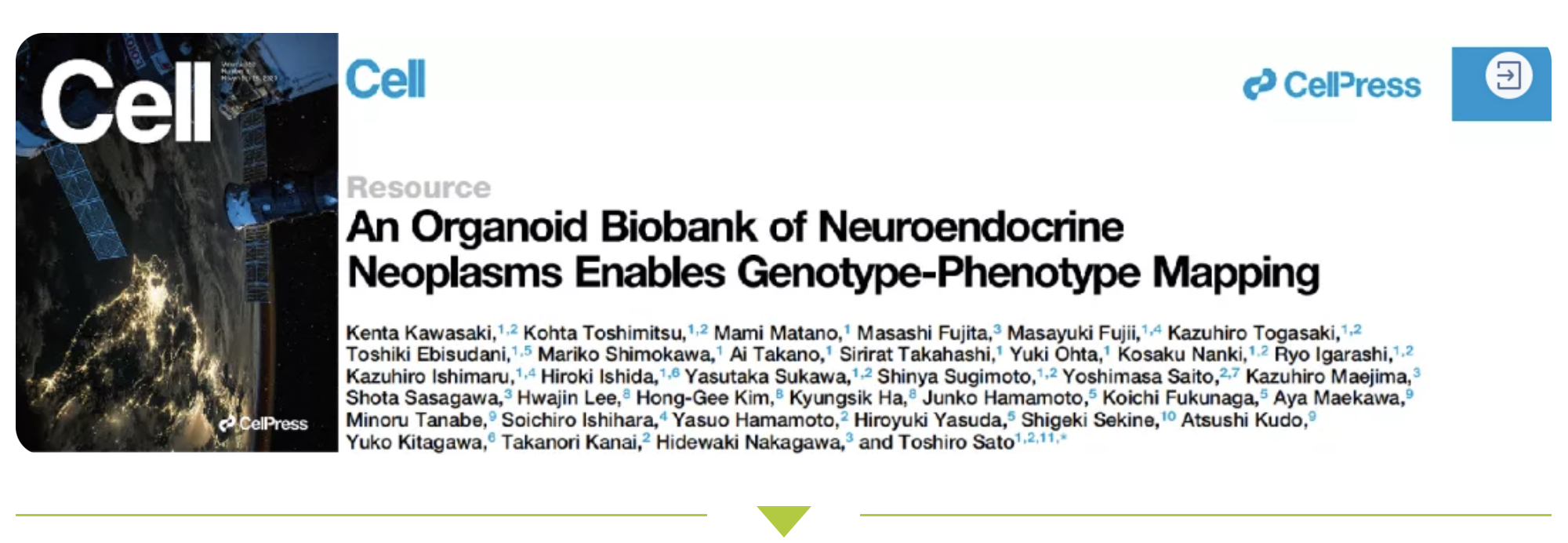
Gastroenteropancreatic (GEP) neuroendocrine neoplasm (NEN) that consists of neuroendocrine tumor and neuroendocrine carcinoma (NEC) is a lethal but under-investigated disease owing to its rarity. To fill the scarcity of clinically relevant models of GEP-NEN, 25 lines of NEN organoids were established and comprehensively characterized. Whole-genome sequencing revealed frequent genetic alterations in TP53 and RB1 in GEP-NECs, and characteristic chromosome-wide loss of heterozygosity in GEP-NENs. Transcriptome analysis identified molecular subtypes that are distinguished by the expression of distinct transcription factors. GEP-NEN organoids gained independence from the stem cell niche irrespective of genetic mutations. Compound knockout of TP53 and RB1, together with overexpression of key transcription factors, conferred on the normal colonic epithelium phenotypes that are compatible with GEP-NEN biology. Altogether, this study not only provides genetic understanding of GEP-NEN, but also connects its genetics and biological phenotypes.

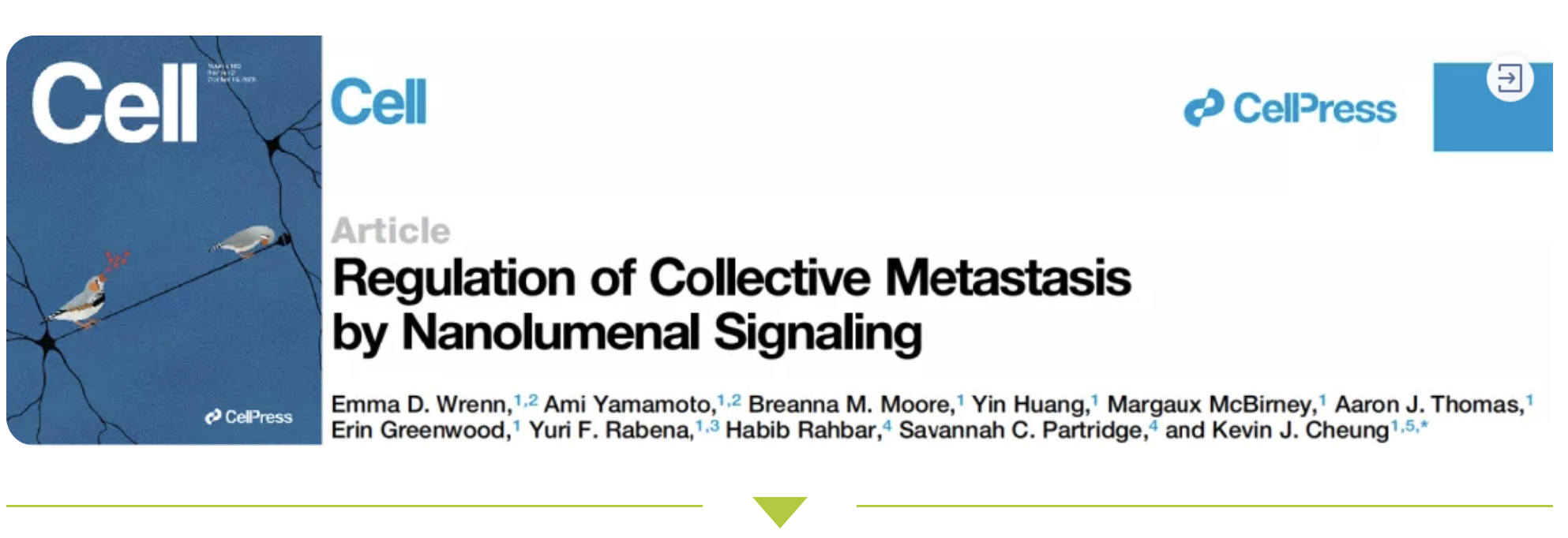
Collective metastasis is defined as the cohesive migration and metastasis of multicellular tumor cell clusters. Disrupting various cell adhesion genes markedly reduces cluster formation and colonization efficiency, yet the downstream signals transmitted by clustering remain largely unknown. In this study, authors used mouse and human breast cancer models to identify a collective signal generated by tumor cell clusters supporting metastatic colonization. Their results suggest that nanolumenal signaling could offer a therapeutic target for aggressive metastatic breast cancers.

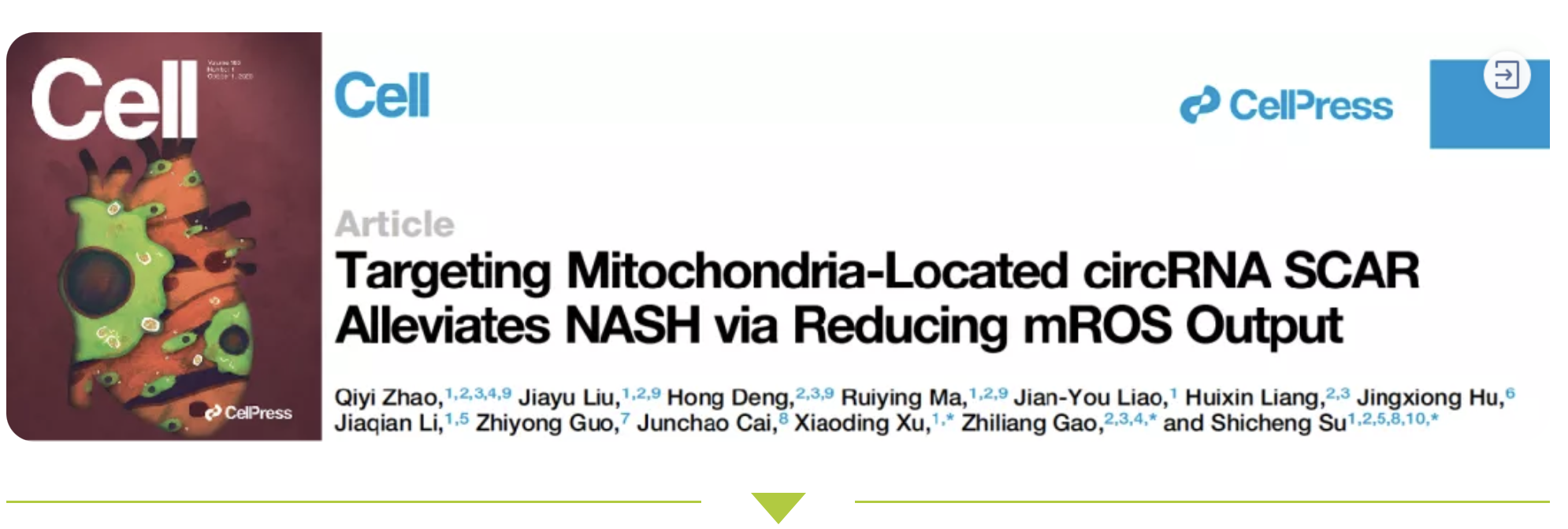 Mitochondria have their own genome and play central roles in immunometabolic diseases. However, the functions of mitochondria-located noncoding RNAs are largely unknown due to the absence of a specific delivery system. By circular RNA (circRNA) expression profile analysis of liver fibroblasts from patients with nonalcoholic steatohepatitis (NASH), authors observe that mitochondrial circRNAs account for a considerable fraction of downregulated circRNAs in NASH fibroblasts. By constructing mitochondria-targeting nanoparticles, they observe that Steatohepatitis-associated circRNA ATP5B Regulator (SCAR), which is located in mitochondria, inhibits mitochondrial ROS (mROS) output and fibroblast activation. circRNA SCAR, mediated by PGC-1α, binds to ATP5B and shuts down mPTP by blocking CypD-mPTP interaction. Lipid overload inhibits PGC-1α by endoplasmic reticulum (ER) stress-induced CHOP. In vivo, targeting circRNA SCAR alleviates high fat diet-induced cirrhosis and insulin resistance. Clinically, circRNA SCAR is associated with steatosis-to-NASH progression. Collectively, they identify a mitochondrial circRNA that drives metaflammation and serves as a therapeutic target for NASH.
Mitochondria have their own genome and play central roles in immunometabolic diseases. However, the functions of mitochondria-located noncoding RNAs are largely unknown due to the absence of a specific delivery system. By circular RNA (circRNA) expression profile analysis of liver fibroblasts from patients with nonalcoholic steatohepatitis (NASH), authors observe that mitochondrial circRNAs account for a considerable fraction of downregulated circRNAs in NASH fibroblasts. By constructing mitochondria-targeting nanoparticles, they observe that Steatohepatitis-associated circRNA ATP5B Regulator (SCAR), which is located in mitochondria, inhibits mitochondrial ROS (mROS) output and fibroblast activation. circRNA SCAR, mediated by PGC-1α, binds to ATP5B and shuts down mPTP by blocking CypD-mPTP interaction. Lipid overload inhibits PGC-1α by endoplasmic reticulum (ER) stress-induced CHOP. In vivo, targeting circRNA SCAR alleviates high fat diet-induced cirrhosis and insulin resistance. Clinically, circRNA SCAR is associated with steatosis-to-NASH progression. Collectively, they identify a mitochondrial circRNA that drives metaflammation and serves as a therapeutic target for NASH.

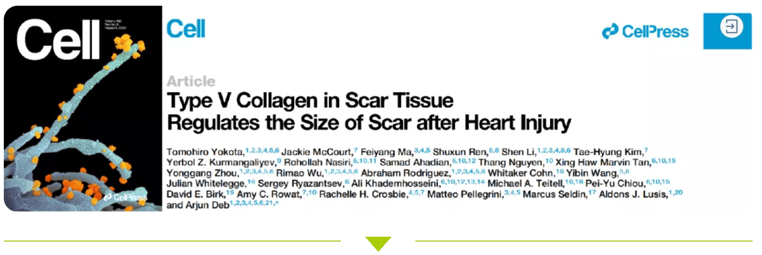
Scar tissue size following myocardial infarction is an independent predictor of cardiovascular outcomes, yet little is known about factors regulating scar size. Authors demonstrate that collagen V, a minor constituent of heart scars, regulates the size of heart scars after ischemic injury. Depletion of collagen V led to a paradoxical increase in post-infarction scar size with worsening of heart function. A systems genetics approach across 100 in-bred strains of mice demonstrated that collagen V is a critical driver of postinjury heart function. Authors also show that collagen V deficiency alters the mechanical properties of scar tissue, and altered reciprocal feedback between matrix and cells induces expression of mechanosensitive integrins that drive fibroblast activation and increase scar size. Cilengitide, an inhibitor of specific integrins, rescues the phenotype of increased post-injury scarring in collagen-V-deficient mice. These observations demonstrate that collagen V regulates scar size in an integrin-dependent manner.

